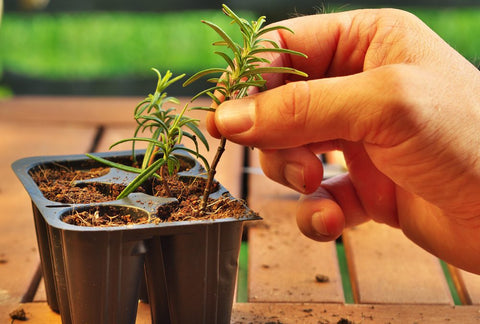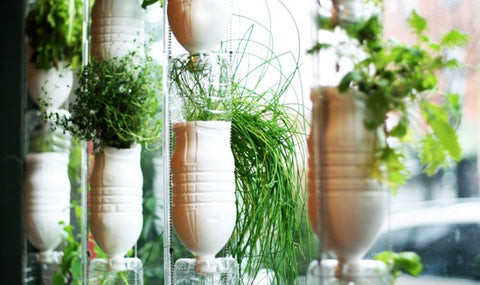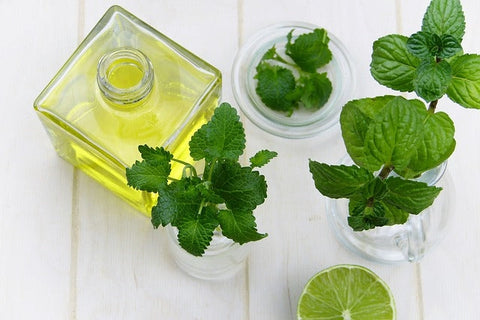Taking cuttings from a parent plant, and using it to start a new plant, is a fairly common way of expanding your garden at a relatively low cost.
But being harvested from its 'parent' plant is a somewhat stressful experience for the plant, and hormones are one of the ways we can help plants overcome this stress.
In this blog, we'll be looking at rooting hormones specifically, and how they can be used to efficiently expand your garden.
What are the Types of Plant Hormones?
As you may be already aware, just like us humans, plants use hormones to grow. There are 5 main types of hormones:
- Auxin
- Abscisic acid
- Cytokinins
- Ethylene Gibberelli
- Brassinosteroids
It’s important to know that the particular hormones we are interested in here are the ones called “auxins”, which are the ones that tell the plant to root. One auxin is called Indole-3-butyric acid (IBA). There are a few synthetic chemicals that replicate IBA and they are available to home gardeners in various different forms, such as powders, liquids, and gels (more on that below).
Some kinds of cuttings require rooting hormone more than others. The greenness of the stem is what determines the cutting’s rooting capability. The top part of a cutting is called “softwood.” This is the part of the stem that is green and bends easily without breaking. Softwood cuttings can often root in water alone and don’t need hormones.
In most herbs, your cuttings will all be softwood cuttings. Basil, mint, cilantro, lemon balm, etc. are all mostly softwood. Other herbs that grow more stiffly, like rosemary and thyme, will have stems that have already turned brown and hardened. The middle part of the stem, where the green changes to brown, is called semi-hardwood.
The hardest part of the stem is called hardwood. These older parts of the stem contain less rooting hormone than the softwood part of the stem. If you take a hardwood cutting, you will definitely need to apply growth hormone.
When to Use Rooting Hormones?
Rooting hormones are only to be used when propagating plants.
When Not to Use Rooting Hormones?
Make sure not to use rooting hormones to your plants when they’re already mature, as they can do damage instead of helping and improving your plant’s rooting system.
Tips on How to Apply Plant Rooting Hormone?
- Dosage is important. Too little rooting hormone will have no effect on the plant, but too much will cause the plant to yellow and wither. Just like real medicine, it’s important to get the dosage right.
- To prevent contamination, always remove a small amount of the rooting hormone first and put it into a separate bowl or dish. Throw away any unused rooting hormone powder at the end. This will prevent you from carrying over any diseases from one plant to another.
Ways to Use Growth or Rooting Hormone for Plant Cuttings
For ways to use rooting hormone powder for your plant cuttings, follow the below steps:
- Dip the end of your cutting into a shallow plate of rooting hormone powder.
- Then tap the end of your cutting on the table or the edge of the plate to shake off excess powder. You should have a thin film of hormone left over on the skin of the cutting, no more than a quarter inch away from the base of the stem.
- You can put the cutting into a glass of water to start it, or you can plant it directly in a pot of potting medium (more on that below). If you do use a potting medium, don’t shake off the stem first.
- Just push the stalk firmly down into the soil. Any loose hormone will rub off into the soil, which is fine. It’s better to start out with too little than too much.
For ways to use rooting hormone liquid, you can follow these instructions:
- Dip the end of your cutting into a cup or bowl containing the hormone. Only hold the cutting there for a second or two, not more. Too much time can cause the plant to absorb too much rooting hormone, which may cause the leaves to yellow or burn the plant stem.
Rooting hormone in liquid form is powerful and the results can be better than average, but the dosage can be difficult to get right. Beginners often prefer rooting hormones in powder form instead because it is harder to make mistakes.
Other Ways to Use Rooting Hormone
You may be curious as to what you can use instead of rooting hormone powder or rooting hormone liquid. The answer is, that rooting hormone also comes in gel form, which is the easiest to apply because it’s easier to measure dosage, and the gel tends to stay on the plant stem better than powdered hormone does. Just follow the steps below to use your gel-form rooting hormone.
- Rooting hormone gel works best when you are planting your cuttings in a rooting medium and not in a glass of water. Dip the cutting in a bowl of gel according to the instructions. Typically, the gel should come up about a quarter of an inch on the stem.
- Push the cutting directly into the rooting medium afterward.
- Discard any unused gel when you are finished.
With rooting hormone, you should see a better response from your cuttings than if you used water alone, especially if you have more semi-hardwood or hardwood cuttings. Rosemary and thyme, for instance, are unlikely to root in water alone, but with rooting hormone and a dry rooting medium, they can do very well.
How to Use Rooting Hormone for Tree Cuttings?
Aside from herb cuttings, you can also try using rooting hormones for your tree cuttings. We all know that trees are the most expensive kind of plants to buy, so it just makes sense that we should propagate them from cuttings. Auxin, the rooting hormone of plants, makes this process so much easier by hyping up your cuttings to form their roots.
The below instructions are just basic steps to know about how to apply rooting hormone for your tree cuttings:

-
- Get your tree cuttings and clean your pruning shears or knife or other tools you like to use
- Harvest your cuttings and wrap them in damp paper towels.
- Fill up your pot with your soil mix of choice. Then get your rooting hormone and follow the instructions indicated on the package.
- Make sure to strip off the lower leaves on a cutting, allowing only a couple of leaves to remain at the tip. Cut those leaves in half if they are large. Dip the lower end of the cutting in the rooting hormone.
- Poke a hole in the potting mix. Insert the base of the cutting about 1 to 2 inches deep, making sure at least one node is covered. Tamp the mix tightly around the base of each cutting.
- Stick three or four drinking straws into the mix around the edges of the pot. Turn a gallon plastic bag upside down and place it like a tent over the pot, making sure the straws hold the bag away from the cuttings.
- Zip the bag partially shut under the pot for trees that like high humidity. Leave the bag open for trees that prefer drier conditions.
- Place the pot in a warm location where it will get bright light but no direct sun. Make sure the soilless mix remains damp but not soggy.
- After a month, you can then check if the cuttings have formed roots. You can do this by tugging lightly on a cutting to see whether it still moves easily in the soil
- Remove the bag for a short period of time once most of the cuttings have been rooted. Increase that time gradually, until the cuttings are hardened off and can be transplanted.
Where to Buy Rooting Hormones for your Plants?
Rooting hormones can easily be bought in almost any gardening store near you or of course Amazon.
To learn more about other helpful tips about indoor gardening, get a FREE copy of our ebook below.











There are no comments for this article. Be the first one to leave a message!